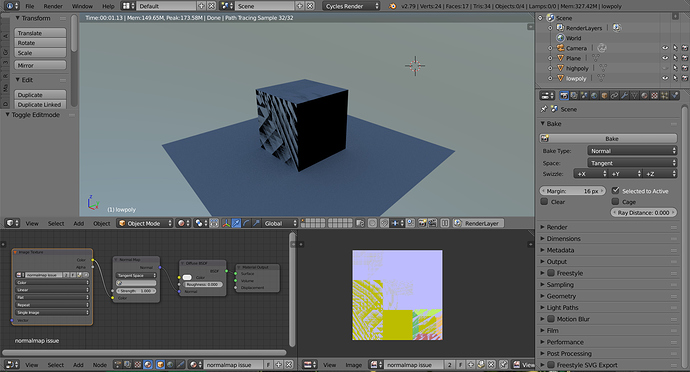Ok, I’ll chime in even though I don’t consider myself to be an experienced sculptor.
Dynotopo is the newer sculpting method added to blender. It dynamically tessellates the areas of your mesh you are sculpting on, increasing the resolution of those parts as necessary. The downside is that this is always triangulated geometry and isn’t suitable for uses aside from static sculptures.
We stick with quads in part because it makes it easier to place loopcuts across faces, and we need that sort of control when placing extra loops around areas that deform. Tris can also cause pinching when using subdivision surfaces because catmull-clark converts tris to quads.
All polygons are converted to tris before they are rendered, even in cycles (Test out the wireframe node there). Some game engines can’t handle the conversion from quads to tris on their own for some reason. This is why game asset makers sometimes have to triangulate their meshes before export to game engines.
Sculpting also becomes less responsive sooner when using dynotopo than with the multires modifier. They say when you split your mesh into sections, you can sculpt around 1.6 millions polygons on each section with dynotop before slowdown. With the multires, the limit is supposed to be a lot higher (around 10 million polygons).
Multires is optimized for the high poly to low poly workflow. You sub-divide your base mesh with the multires modifier, and sculpt on the highest detail level. When you are done, you copy your mesh, set the detail level to one of the lower stages, and apply the modifier on the copy. You’ll have a low poly mesh that more closely matches the highres version that you can bake the highres details onto.
The multires Is also far less destructive, you can add more detail to a quad based mesh and end up with a quad based result that doesn’t need retopologizing.
Getting predictable results also allows you to use it for tricks like this:
Dynotopo would cause the number of verts to be different between the two meshes.
The one downside to the multires modifier is a long standing glitch where sculpting on a lower subdivision level can cause artifacts in the higher levels. The modifier is still perfectly suitable for sculpting if you only work on the highest level though.
 / Any help would be much appreciated!!!
/ Any help would be much appreciated!!!
